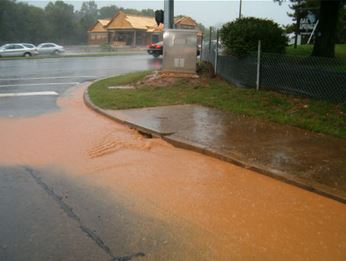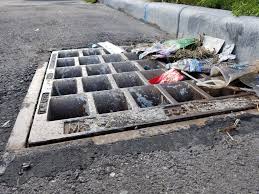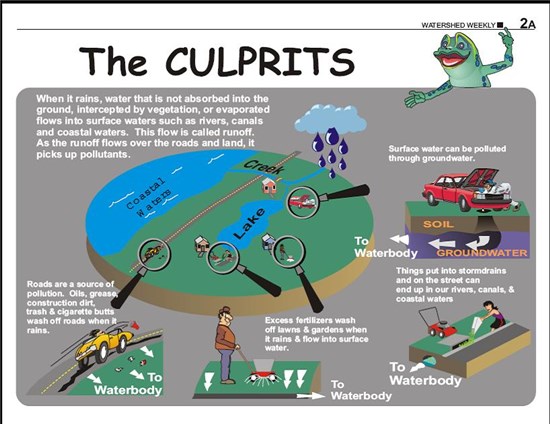Public Education and Outreach
Public Education, Outreach, and Involvement
On this page you will find more information about stormwater, how stormwater runoff is managed, ways you can help reduce stormwater pollution, and links to a number of other online resources.
What is Stormwater?
Stormwater is the flow of water that results from precipitation which occurs immediately following rainfall or snow melt. Impervious surfaces like driveways, rooftops, and streets prevent stormwater from naturally soaking into the ground and create runoff that can carry pollutants into our public waterways.
Why is stormwater runoff a problem?
Polluted stormwater runoff is the number one cause of water pollution in North Carolina. In most cases in North Carolina today, stormwater either does not receive any treatment before it enters our waterways or is inadequately treated. Stormwater can pick up pollutants such as dirt, debris, and chemicals that flow into a storm sewer system or directly to a lake, stream, river, or wetland. Anything that enters a storm drain is discharged untreated into the waterbodies we use for swimming, fishing, and providing drinking water.
How do urbanized areas affect water quality?
In contrast, impervious (nonporous) surfaces like roads, parking lots, and rooftops prevent rain and snow melt from infiltrating, or soaking, into the ground. Most of the rainfall and snow melt remains above the surface, where it runs off rapidly in unnaturally large amounts. For more information on how urbanization affects water quality see this fact sheet from the EPA:
Protecting Water Quality from Urban Runoff
Common Pollutants
Sediment
- This is the number one water pollutant in North Carolina.
- Clouds water making it difficult or impossible for aquatic plants and animals to grow.
- Destroys important aquatic habitats.
- Results in increased flooding due to reduced stream capacity.
Chemicals
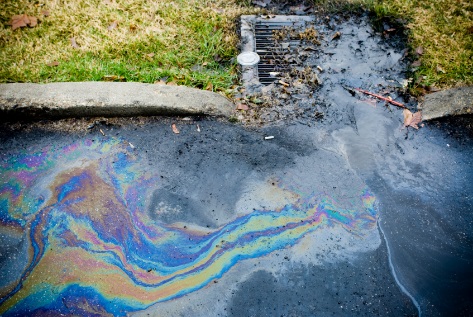
- Automotive fluids, pesticides, paint, detergents and other fluids are considered hazardous waste and can poison aquatic life.
- Land animals and people can become sick from eating fish that inhabit polluted waters.
Debris and Trash
- Trash, leaves, yard clippings, and brush can clog storm drains leading to localized flooding and damage to the storm drain infrastructure.
- These materials also enter the water system and harm aquatic life like ducks, fish, turtles and birds.
Biological pollutants
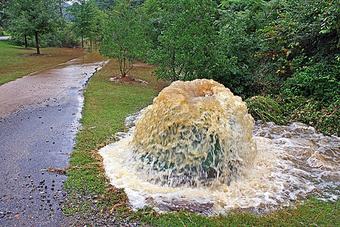
- Harmful bacteria and other pathogens can wash into swimming areas creating potential human health hazards.
- Excess nutrients from fertilizers can cause algal blooms that reduce the levels of dissolved oxygen in water leading to lethal conditions for many aquatic organism.
- Household hazardous wastes like insecticides, pesticides, paint, solvents, used motor oil, and other auto fluids can poison aquatic life. Land animals and people can become sick or die from eating diseased fish and shellfish or ingesting polluted water.
- Polluted stormwater often affects drinking water sources. This, in turn, can affect human health and increase drinking water treatment costs.
- Increased impervious area leads to a loss of infiltration which may cause profound groundwater changes. Although urbanization leads to increases in flooding during storm events, in many instances it results in lower stream flows during dry weather.
- Warm water runoff from streets, rooftops, and parking lots increases the temperature of streams which is harmful to aquatic life, including trout in NC.
Polluted water creates numerous costs to the public and to wildlife. As the saying goes, "we all live downstream". Communities that use surface water for their drinking supply must pay much more to clean up polluted water than clean water.
Polluted water hurts the wildlife in creeks, streams, rivers and lakes. Dirt from erosion, also called sediment, covers up fish habitats and fertilizers can cause too much algae to grow, which also hurts wildlife by using up the oxygen they need to survive. Soaps hurt fish gills and fish skin, and other chemicals damage plants and animals when they enter the water.
The quantity of stormwater is also a problem. When stormwater falls on hard surfaces like roads, roofs, driveways and parking lots it cannot seep into the ground, so it runs off to lower areas. To give you an idea of the difference a hard surface makes, consider the difference between one inch of rain falling onto a meadow and a parking lot. The parking lot shed 16 times the amount of water that a meadow does! Because more water runs off hard surfaces, developed areas can experience local flooding. The high volume of water also causes streams banks to erode and washes the wildlife that live there downstream.
If it only affects streams and creeks, why should I care?
Streams and creeks feed into rivers, lakes and the ocean. We all drink water, so we are all affected when our water is polluted. When water treatment costs rise, the price of drinking water goes up. If you like to fish, swim or boat, you may have heard or been affected by advisories warning you not to swim, fish or boat in a certain area because of unhealthy water or too much algae. Money made from tourism and water recreation can also be impacted, as are businesses and home flooded by stormwater runoff. When we pollute our water, everyone is affected!
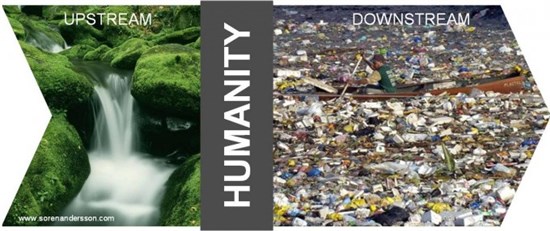
What can I do to reduce the amount of stormwater pollution I contribute?
- If you own a car, maintain it so it does not leak oil or other fluids. Be sure to wash it on the grass or at a car wash so the dirt and soap do not flow down the driveway and into the nearest storm drain.
- If you own a yard, do not over fertilize your grass. Never apply fertilizers or pesticides before a heavy rain. If fertilizer falls onto driveways or sidewalks, sweep it up instead of hosing it away. Mulch leaves and grass clippings and place leaves in the yard at the curb, not in the street. Doing this keeps leaves out of the gutter, where they can wash into the nearest storm drain. Turn your gutter downspouts away from hard surfaces, seed bare spots in your yard to avoid erosion and consider building a rain garden in low-lying areas of your lawn
- If you have a septic system, maintain it properly by having it pumped every three to five years. If it is an older system, be sure it can still handle the volume placed on it today. Never put chemicals down septic systems, they can harm the system and seep into the groundwater.
- Pet owners should pick up after their pets and dispose of pet waste in the garbage.
- Keep lawn and household chemicals tightly sealed and in a place where rain cannot reach them. Dispose of old or unwanted chemicals at household hazardous waste collections sites or events.
- Never put anything in a storm drain.
- Don't litter.
Educational Resources and Materials
EPA Soak up the Rain Website: https://www.epa.gov/soakuptherain/soak-rain-whats-problem
Homeowners Guide to Stormwater PDF
For more information on local water quality programs and volunteer opportunities you can visit the following websites:
Asheville Greenworks Volunteer Opportunities
